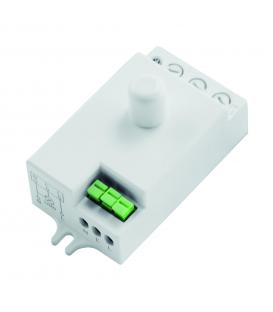Explanation for dimensions of luminaires (Height x Width x Depth)

Luminaires are essential components in the realm of lighting design, offering not just illumination but also aesthetic and functional elements to interior and exterior spaces. When discussing luminaires, one cannot ignore the importance of their dimensions, typically expressed in millimeters (mm) as Height x Width x Depth. These dimensions play a pivotal role in determining how a luminaire performs and integrates into its environment. In this comprehensive guide, we delve into the technical aspects and considerations that influence luminaire dimensions.
Height (H): The height of a luminaire, often referred to as its drop or suspension, measures the distance from the base to the topmost point of the fixture. This dimension is critical in ensuring the proper distribution of light and controlling the luminous flux. A taller luminaire may provide more direct and focused lighting, while shorter ones can disperse light more broadly. Additionally, height affects the fixture's visual impact in a space.
Width (W): Width refers to the horizontal measurement of the luminaire from one side to the other. It determines the spread of light emitted and is particularly important for fixtures designed to cast a wide beam. The width also has implications for the luminaire's aesthetics and how it complements the overall design of the space. A wider luminaire may be used to create a sense of balance or to cover a larger area with light.
Depth (D): Depth measures the front-to-back dimension of the luminaire. It plays a crucial role in the distribution of light and the fixture's mounting options. A greater depth often accommodates more intricate lighting technologies, such as multiple lamp configurations or advanced optics. The depth also affects how a luminaire can be recessed into a ceiling or wall, or whether it can be surface-mounted.
Technical Considerations:
Light Distribution: The dimensions of a luminaire influence the pattern and intensity of light distribution. For example, a taller and narrower fixture may produce a more focused beam suitable for task lighting, while a wider and shallower one may provide ambient illumination.
Mounting Options: Luminaire depth affects how it can be installed. Surface-mounted fixtures typically have a shallower depth, while recessed fixtures require more depth to accommodate the necessary electrical components and housing.
Aesthetics: The dimensions of a luminaire must align with the overall design scheme of the space. Larger, prominent fixtures may serve as design focal points, while smaller, unobtrusive ones blend seamlessly into the environment.
Luminous Efficacy: The size of the luminaire can impact its luminous efficacy, with larger fixtures often having more space for advanced optics, heat dissipation, and efficient light sources.
In conclusion, understanding the dimensions of luminaires in terms of height, width, and depth is crucial for achieving the desired lighting effects and integrating lighting fixtures harmoniously into a space. These dimensions are influenced by technical requirements, aesthetic considerations, and the specific lighting needs of a given environment. Careful consideration of these factors is essential when designing and selecting luminaires for any lighting project.






